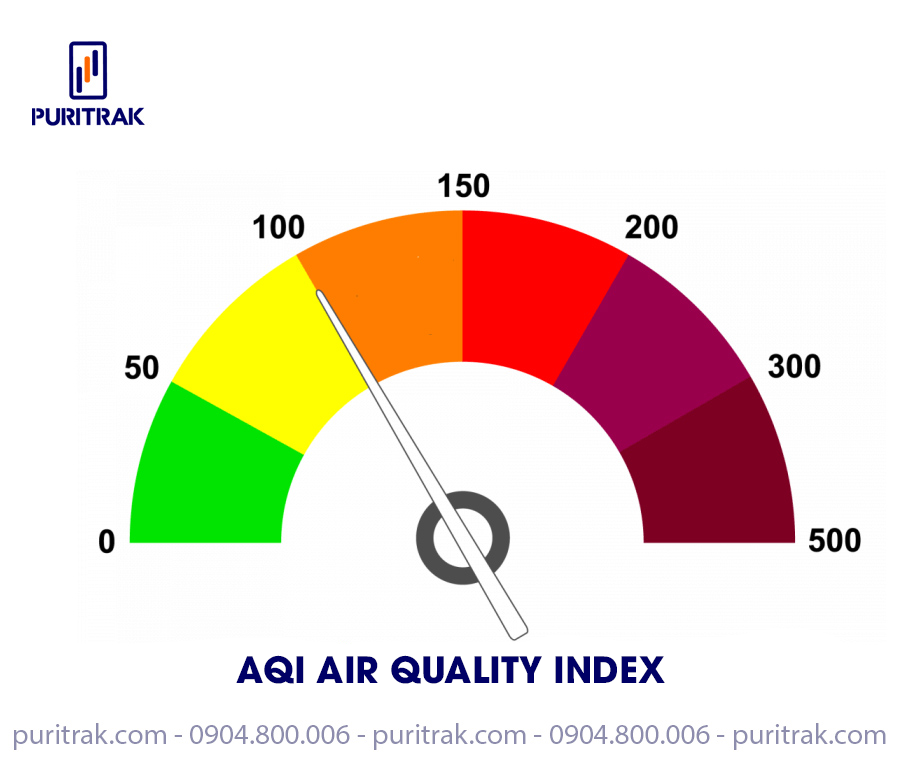
Air Quality Index (AQI) is a measurement used to evaluate the level of air pollution and its impact on human health. AQI is commonly used to provide simple and easy-to-understand information about air quality in a specific area and to help the public make decisions about daily activities and health protection measures.
1. Pollutants are measured using the air quality index AQI
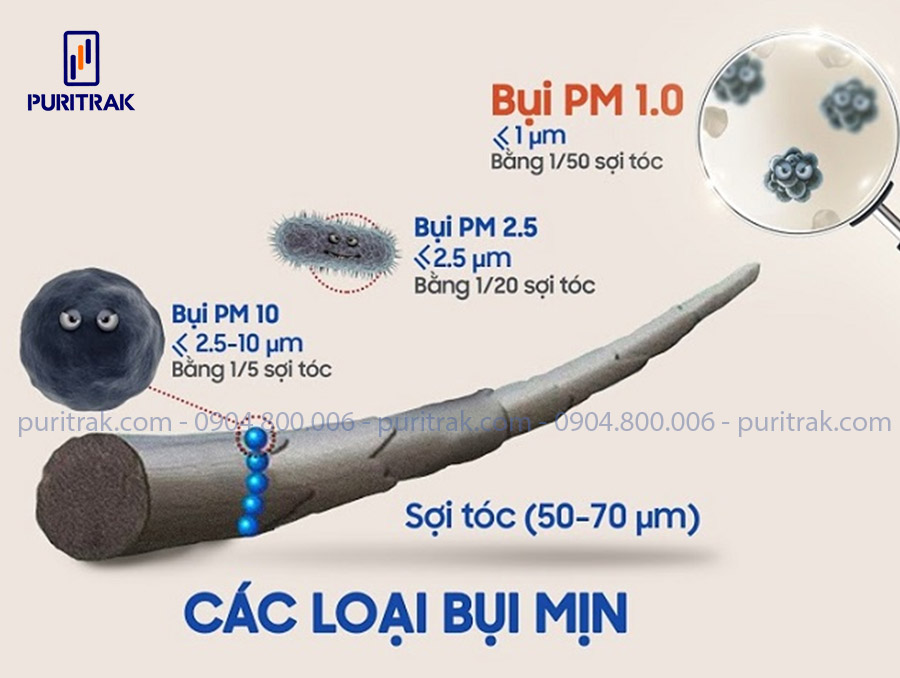
PM2.5: PM2.5 is an indicator that measures fine particles with a diameter equal to or smaller than 2.5 micrometers (μm). These particles are extremely small, invisible to the naked eye, and have the capacity to deeply penetrate the lungs. PM2.5 is primarily generated from fossil fuel combustion, vehicle emissions, industrial activities, and various other sources of pollution.
PM10: PM10 is an indicator that measures coarse particles with a diameter equal to or smaller than 10 micrometers (μm). These particles are larger than PM2.5 and can enter the respiratory system. Similar to PM2.5, PM10 originates from fossil fuel combustion, vehicle emissions, industrial processes, and other pollution sources.
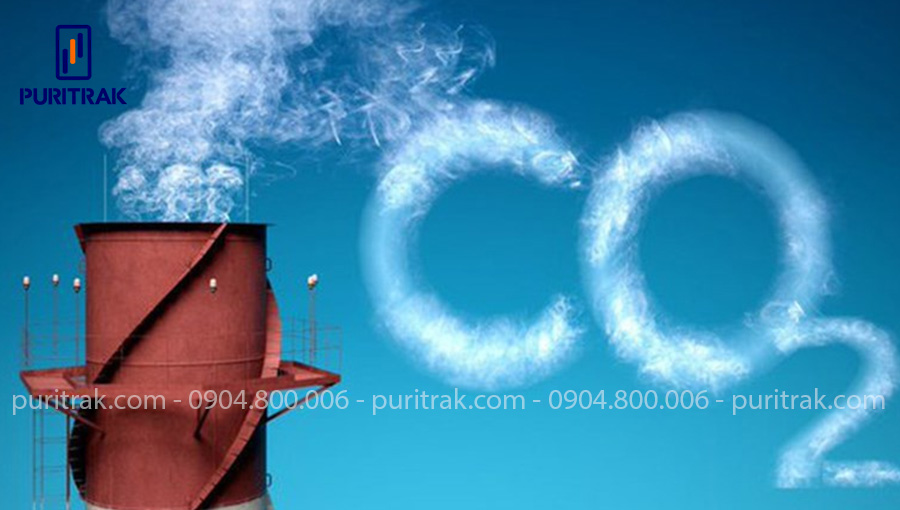
CO2 (Carbon Dioxide): CO2 is a naturally occurring gas in the atmosphere and is the primary byproduct of fuel combustion. The significant rise in CO2 levels in the atmosphere is largely attributable to human activities, including the burning of fossil fuels and deforestation. CO2 is recognized as a major contributor to the greenhouse effect and subsequent climate change..
SO2 (Sulfur Dioxide): SO2 is a gas characterized by its pungent and acrid odor. It is predominantly emitted through the combustion of sulfur-containing fuels like coal and fuel oil. SO2 is recognized as an environmental pollutant and can lead to respiratory issues, eye irritation, and various other health concerns.
O3 (Ozone): O3 is a naturally occurring gas created through the interaction of oxygen gas (O2) with sunlight. While O3 plays a crucial role in the stratosphere, excessive levels of ozone at ground level become a pollutant. High concentrations of O3 can lead to respiratory issues, eye irritation, and adverse effects on human health.
The above indicators are all important indicators to measure air quality and provide information about the level of pollution and its impact on human health. Understanding and monitoring these indicators helps us identify environmental conditions and take preventive measures to improve air quality.
2. AQI air quality index assessment table
AQI is considered a measure that runs from 0 to 500. The higher the AQI value, the greater the level of air pollution and the greater the health concern. The AQI rating table usually has classification levels from “good”, “moderate”, “unhealthy for sensitive groups”, “unhealthy”, “very unhealthy” to “dangerous”. Each level will have a corresponding value limit.
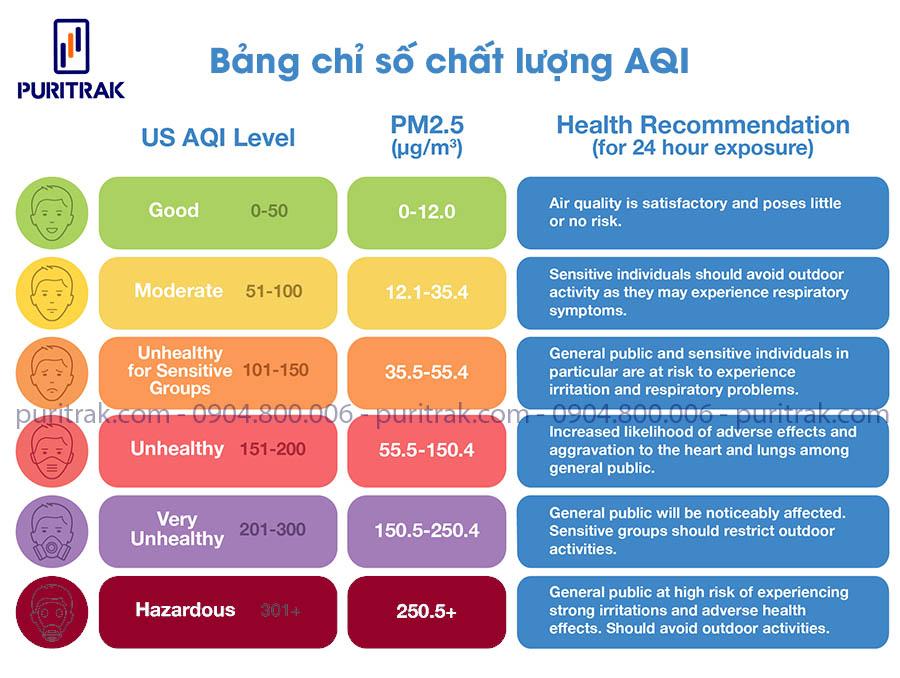
2.1. Good
AQI index: 0-50
PM2.5 index (μg / m 3 ): 0-12.0
Corresponding color: blue
AQI in this range indicates good air quality. No significant impact on human health.
2.2. Medium
AQI index: 51-100
PM2.5 index (μg / m 3 ): 12.1-35.4
Corresponding color: yellow
An air quality index in this range indicates average air quality. Sensitive people may experience some effects such as mild shortness of breath and some health difficulties.
2.3. Unhealthy for sensitive groups
AQI index: 101-150
PM2.5 index (μg / m 3 ): 35.5-55.4
Corresponding color: orange
An AQI in this range indicates poor air quality. Sensitive people, such as children, the elderly and people with respiratory problems, may experience effects such as difficulty breathing, irritability and an increase in respiratory symptoms.
2.4. Unhealthy
AQI index: 151-200
PM2.5 index (μg / m 3 ): 55.6-150.4
Corresponding color: red
An AQI in this range indicates unhealthy air quality. People, especially those with respiratory problems, should limit outdoor activities and protect their breathing, as the effects of air pollution can increase the risk of illness.

2.5. Very unhealthy
AQI index: 201-250
PM2.5 index (μg / m 3 ): 150.5-250.4
Corresponding color: purple
An AQI in this range indicates very unhealthy air quality. Even healthy people can experience serious effects, including difficulty breathing, fatigue and increased risk of respiratory and cardiovascular diseases.
2.6. Danger
AQI index: 301 or higher
PM2.5 index (μg / m 3 ): 250.5 or more
Corresponding color: deep red
An AQI air quality index in this range indicates air quality that is hazardous to health. Everyone can experience serious health effects, including severe shortness of breath, heart attacks, fatigue and can cause serious health problems.
The level of impact of AQI on human health depends on the level and duration of exposure to polluted air. Monitoring and understanding AQI can help us know when to limit outdoor activities, use masks, and seek other health protection measures to reduce the impact of polluted air.

To monitor the AQI index, people can refer to Puritrak’s air quality measuring device. A pioneer company in the field of providing air filtration systems. The company has a full range of products from indoor air quality measuring devices, outdoor measuring stations to air purifiers and air quality monitoring software.
See more:
>>Indoor air quality measuring device
>>Outdoor air quality measuring device
If you need further assistance with information related to the air filtration system, please contact the information below to have Puritrak’s experienced technical department advise you on the right product for you. Thank you for reading the article!
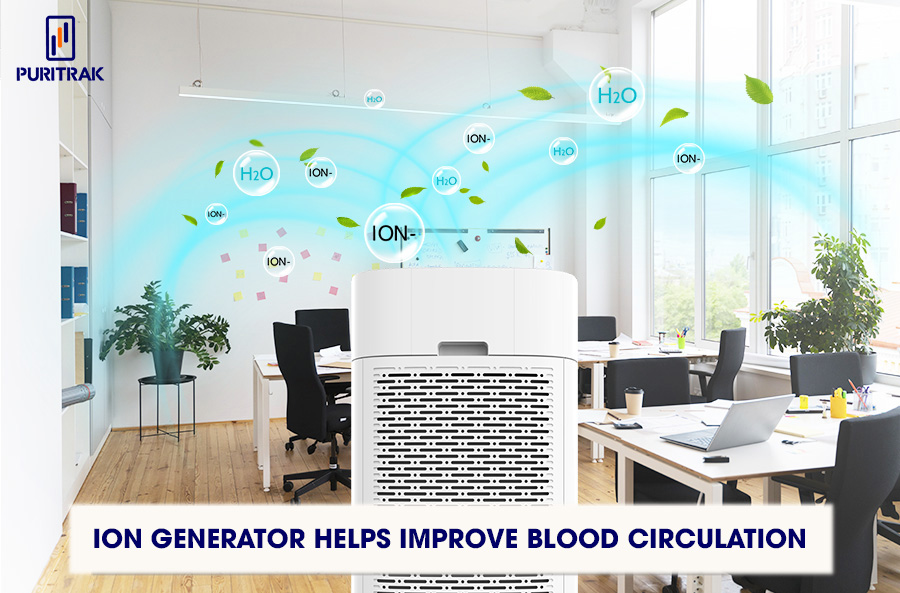
Contact Info:
Hotline: 0904.800.006
Website: puritrak.com
Email: [email protected]
Fanpage: Puritrak




 Tiếng Việt
Tiếng Việt